One of the most noteworthy impacts of the COVID-19 pandemic has been the national labor shortage and the widespread media attention it has earned. According to Newsweek, there were 10.4 million job openings in the United States in September, but fewer than 8 million unemployed workers. That gap has placed enormous stress on the overall Read more
Plumbing
One of the most noteworthy impacts of the COVID-19 pandemic has been the national labor shortage and the widespread media attention it has earned.
According to Newsweek, there were 10.4 million job openings in the United States in September, but fewer than 8 million unemployed workers. That gap has placed enormous stress on the overall economy, from manufacturing and distribution to the retail and service sectors, as suppliers struggle to meet consumer demand.
For those in the skilled trades industries, this story is familiar. They have faced a chronic version of the overall labor shortage for decades.

Demographic challenges and misconceptions
The average age of skilled workers is now 43, according to one estimate from Angi. With fewer young people entering the trades every year, the situation is expected to get worse. The approaching wave of baby boomer retirements will only add to the problem.
For manufacturing, construction, and field service companies, the skilled trades crisis poses major ongoing challenges. It’s hard to maintain productivity and customer service while you’re understaffed or experiencing frequent turnover. Projects are often delayed because workers aren’t available. Revenue is lost for multiple reasons: worker inexperience, inefficiency, long work hours, or jobs that have to be postponed or turned down.
Unfortunately, many high school students and recent graduates who might thrive in the trades never consider a career in those industries. The message that college is the only path to success has become ingrained in our culture in the last 30 years. Despite the rising cost of higher education and the increasing number of students who never earn a degree, the college journey has eclipsed all other options.
In addition to highlighting the labor crisis, recent circumstances have demonstrated that manufacturing, distribution, and residential and commercial service jobs are a critical part of the national economy. These industries played a key role in public health and safety during lockdowns and periods of social distancing and quarantines. Many products and services provided by the HVAC and PHCC industries proved to be essential during the pandemic and have remained critical economic drivers as communities have reopened.
This national spotlight on the essential nature of the trades offers an opportunity to reorient public perception and correct the misconceptions that have contributed to the skilled trades labor gap.

Closing the gap
In response to the growing labor gap, trade organizations have partnered in recent years with vocational schools, employers, manufacturers, and public agencies to promote the trades as a viable alternative to a four-year degree. Their combined efforts are focused on the many immediate advantages offered by a skilled trades career:
- High wages
- On the job or employer-funded training
- Lack of student debt
- Immediate available positions
- A wide variety of vocational options and career trajectories
- Entrepreneurial opportunities
Additionally, advocates and thought leaders are making the case for other long-term strategies that will create a more effective and reliable talent pipeline. Among those ideas is diversification. Many communities have traditionally been underrepresented in the trades; focusing recruitment, outreach, and marketing efforts in those communities can build trust and allow the trades industries to connect with vibrant new pools of talent.

Immediate solutions
Those efforts, however, will take time to pay off. In the meantime, employers are still faced with a labor crisis of historic proportions and the urgent need to operate efficiently in order to remain competitive in this challenging economic climate.
In order to maintain productivity throughout the remainder of the pandemic and during recovery, many employers are looking for immediate solutions. While there is no magic bullet that will compensate for a labor shortage, there are a number of new and emerging tools available that can help companies boost efficiency and productivity so they can continue to deliver results for their customers.
The pandemic has focused a spotlight on the importance of the technology revolution that was already underway among skilled service providers. Some of the major technology trends and developments that have been accelerated by the pandemic and its fallout are:
- Mobile and remote capabilities: As COVID-19 forced many employees across multiple industries to work cohesively without a physical office, technician mobile apps and other remote technologies have become invaluable to commercial contractors of all types. Today, various mobile applications give teams remote work capabilities that weren’t possible a decade ago.
- Modular construction: The modular construction market is seeing an increase in business, which is in response to combined cost-effective construction technology and labor shortages. Modular and offsite construction continues to grow and contribute to less expensive housing and commercial construction. In addition to their convenience, other benefits of modular projects include the ability to more effectively regulate worker safety within ventilated and climate-controlled workspaces. These advantages also further help workers comply with social distancing guidelines.
- Artificial Intelligence: Artificial intelligence (AI) is capable of lowering the cost of construction and service while helping teams successfully plan and schedule projects. AI is frequently used in software to conduct analyses and simulations in a variety of hypothetical situations and environments. In turn, AI is invaluable in developing new safety protocols and minimizing the risk of workplace injuries. Its role is expected to continue to rise in response to the workforce shortage exacerbated by COVID-19 shutdowns.
- Integrated software solutions: The number of contractors who still rely on pencil and paper or spreadsheets for record-keeping and accounting has steadily dwindled over the last decade, and sharply declined during 2020. Simply switching from manual job management to an enterprise solution can generate major gains for most businesses. A single all-in-one platform is critical for efficiency; requiring technicians to move back and forth between multiple apps not only takes up precious work time, it can serve as an obstacle to adoption.
- When actionable data from across departments is collected and accessible in real time, all parties involved in a project benefit. Up-to-the-minute insights and transparent communication empower purposeful, immediate decision-making and fast, accurate execution.
Resolving the labor shortage that has challenged the skilled trades will be a win not only for the industries involved. The long-term strategies currently being deployed will expand the choices available for young people and dismantle the preconceived notion that a college degree is required for success. By opening up opportunities for vocational training and apprenticeships in place of a university program, we can ensure young people are on the right track from the start. Presenting the trades as a viable option could also help reduce the national burden of student debt and alleviate college dropout rates.
In order to find and implement a comprehensive solution, it is imperative that we examine and assess our educational pipeline and deliver an authentic message about the advantages and opportunities of skilled trades careers. Innovation is the key to ensuring America’s workforce is prepared and supported.
For more information on this subject, visit www.buildops.com.

Jobber, the leading provider of home service management software, today announced the general availability of new features that make it easier for homeowners to reward their service pros directly with tips and support their businesses through referrals to friends and family. These features are designed to help service pros better meet increasing consumer expectations for Read more
Jobber, the leading provider of home service management software, today announced the general availability of new features that make it easier for homeowners to reward their service pros directly with tips and support their businesses through referrals to friends and family. These features are designed to help service pros better meet increasing consumer expectations for seamless, technology-enabled service experiences.
“Building a reputation for excellent customer service doesn’t happen overnight,” said Sam Pillar, CEO & co-founder of Jobber. “Businesses that use Jobber understand the importance of prioritizing the customer experience, and we want to make sure that their efforts don’t go unrewarded. Jobber now helps keep your team motivated to prioritize customer service by being able to earn tips and helps you grow your business through customer referrals when you’ve delivered an excellent customer experience.”

Tip collection on online payments
Jobber’s tipping feature makes it easier for home service businesses to motivate high-performing team members in industries where it is customary to tip, such as residential cleaning, window cleaning, lawn care, and pool and spa servicing. Each business owner controls when to offer their customers the ability to add a tip. When enabled, the option to tip appears during the payment process when a homeowner pays their invoice online with Jobber Payments. Homeowners can choose a percent-based tip (10%, 15%, or 20%) or fill in a custom amount.
This feature also allows managers to identify strong performers by tracking which team members are receiving tips and for how much. When tipping has been presented as an option, nearly one in four (24%) of homeowners opt to provide a tip. In the past five months, Jobber has facilitated the collection of nearly $3M in tips for service pros.
“Taking payments with Jobber makes it very convenient for my customers because I can just send the invoice and the customer can pay it online,” said Irene Zibin, owner of eSunshine Cleaning in Abbotsford, B.C. “My team loves the addition of the tip function, which has led to some pretty good tips—big tips.”
Homeowner Referrals to Grow Your Business
The referrals feature allows homeowners to promote the good work of a home service business to friends and family. The ‘refer a friend’ prompt is displayed to homeowners in Jobber’s online customer portal, encouraging them to share booking links via email, text, or social media. New leads show up in Jobber tagged with information on the client who referred them, so businesses can reward customers for their advocacy.
“People want to do business with those they trust,” said Nick Tandeski, owner of Driveway Envy, serving the Twin Cities Metro area in M.N. “When clients refer us to other homeowners it dramatically increases our chance of winning that business and retaining them as a client. So far, everyone referred through Jobber has ended up doing business with us.”
To learn more about Jobber and how these new features improve the customer experience, visit: https://getjobber.com/why-jobber/
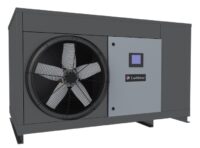
According to a recent study by Global Market Insights, the air source heat pump market value is projected to cross $77 billion by 2028. Increasing demand from growing real estate sector along with soaring requirement of space heating applications across colder regions will encourage the product deployment. Air to water source heat pumps segment is Read more
According to a recent study by Global Market Insights, the air source heat pump market value is projected to cross $77 billion by 2028. Increasing demand from growing real estate sector along with soaring requirement of space heating applications across colder regions will encourage the product deployment.
Air to water source heat pumps segment is anticipated to witness a noteworthy growth owing to various features including simple design and easy installation, says the report. Rising global temperature and growing green building construction will provide positive drivers for product deployment. Integration with solar heating source and hence low input cost for product across temperate countries will drive the space heating systems demand in the forecast timeline.
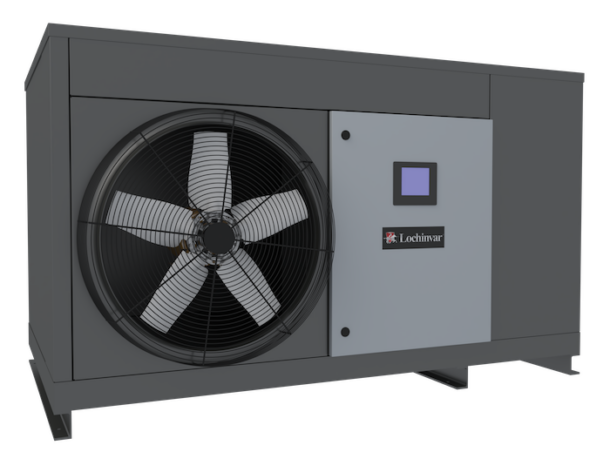
Lochinvar’s air source heat pump water heater
The movement towards electrification—moving away from fossil fuel—seems to be the main driver of the heat pump movement. “I think consumers see an option to add PV, or join a solar garden, to become more energy independent. So having a heating, cooling and DHW option powered by your roof makes some sense. The rise in fossil fuel prices, uncertainty around supply certainly adds some motivation to look at heat pumps,” says Bob ‘Hot Rod’ Rohr, training manager, Caleffi, and former hydronic contractor of more than 30 years.
Recently, Mechanical Hub spoke with Arthur Smith, Residential Product Manager, A. O. Smith, and Jennifer Russell, Segment Development Manager, Decarbonization, Lochinvar, to get the latest on heat pump technology and heat pumps water heaters.
MH: What are some of the driving forces behind this technology?
Arthur: At A. O. Smith, we’ve seen two major driving factors behind the increasing popularity of residential heat pump water heaters. First, as consumers have begun to see wider availability of this technology, along with its carbon emissions reduction and tremendous cost savings, they’ve pushed to utilize heat pump water heaters in their own homes, further increasing demand. The second driving factor we’ve seen is the evolving regulations around decarbonization. These changes have placed an emphasis on heat pump technology as an excellent option for greenhouse gas reduction.

A. O. Smith’s CHP-120 heat pump water heater
Jennifer: On the commercial side, greenhouse gas emission reduction is the main driving force behind the increase and development of heat pump technology. However, due to the lack of availability of commercial heat pump technology, we don’t see it utilized in applications as often as the residential sector. In addition to state and local reduction goals, there are also many companies and building owners who are setting their own goals for reducing greenhouse gas emissions and they’re seeking out heat pump water heaters as a way to meet those goals.
MH: What are the benefits of heat pump technology?
Arthur: The core benefit of heat pump water heaters is the massive jump in efficiency. High efficiencies drive cost savings, which is a huge benefit to homeowners.
Jennifer: One of the main benefits of heat pump technology is that there are zero direct carbon emissions from the unit. For any commercial building looking to decrease its environmental impact footprint, this technology can play a big role in meeting those goals. In addition to the environmental benefits, heat pump technology is also incredibly efficient, providing an average annual efficiency of 200-300%.
MH: Do you see demand for heat pumps more on the residential side than commercial? What is the ratio?
Arthur: Overall, we’ve seen significant interest in both commercial and residential applications.
Jennifer: At Lochinvar, we’ve seen interest in both commercial and residential applications. Interest in ommercial applications for heat pump water heaters has grown significantly in the last couple of years, primarily due to evolving state and local environmental regulations.
Can the grid support a heat pump transition?
Arthur: The grid has been able to support the transition so far, but as heat pump technology continues to increase in popularity, developing the grid will need to be prioritized. It seems that most regulators are aware of this need to develop the grid and are building their regulations accordingly so the grid isn’t overwhelmed.
Jennifer: While the grid may be able to support a heat pump transition eventually, it can’t happen overnight. It’s going to take many years to fully develop a grid that can support a full transition to heat pump technology. In the meantime, we can develop and implement tools, such as demand-response technology, to help support the transition.
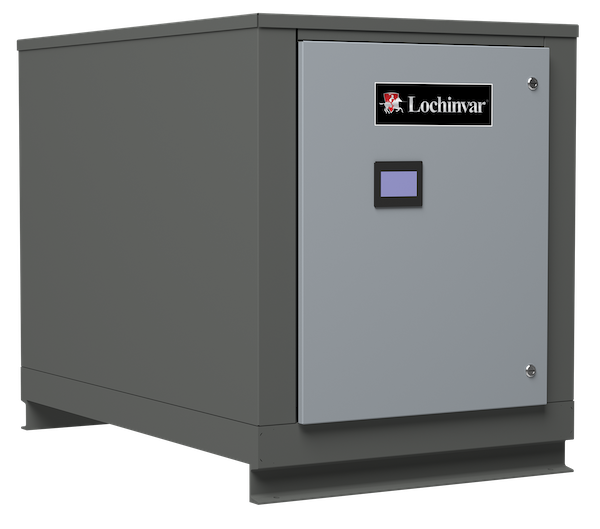
Commercial Heat Pump Water Heater
MH: Is a different skill set required for installation?
Arthur: On the residential side, there isn’t a different skill set required for installation. A. O. Smith designed our residential heat pumps so they can be installed in almost the same way as our standard electric water heaters. There are still some minor considerations, like draining non-acidic condensate produced by heat pumps and differing space requirements, but overall, the installation process is nearly the same as what most contractors are familiar with now.
Jennifer: There isn’t a different skill set required for installation, but there is unique training that can better prepare someone to install or service heat pumps. Heat pump water heaters have features that differ from traditional water heaters and these features require different training. Lochinvar offers training to help educate on the unique application features of heat pump technology.
MH: What is the life expectancy compared to boilers?
Arthur: Our heat pump water heaters are built to the same quality standards as all A. O. Smith products. We put care into developing products that perform well throughout their lifetime. We’re confident in our products and offer a standard 10-year limited warranty on every heat pump we produce.
Jennifer: You’re not going to see any loss of life expectancy with heat pump water heaters. They’re designed to hold up and perform as well as other water heating technology
MH: Do you offer training for these products?
Arthur: Since residential heat pump technology has been around for a bit longer than commercial, we’ve had time to develop training resources that focus on the installation and servicing of these units. A. O. Smith University offers digital live training at www.university.hotwater.com and there are courses available that focus specifically on heat pump technology.
Jennifer: At Lochinvar, we offer training resources to educate sales reps, engineers, contractors and technicians on heat pump technology. At the moment, our heat pump training focuses on topics such as applications for heat pumps, ensuring the correct unit size specification and understanding the technology’s benefits and features.

Working as a tradesperson can benefit you in many ways, and there will always be people who need to use your services. There are many different trades that you can choose from depending on your interests and skills, and among these is the plumbing trade. With the right skills and training, you can enjoy a Read more
Working as a tradesperson can benefit you in many ways, and there will always be people who need to use your services. There are many different trades that you can choose from depending on your interests and skills, and among these is the plumbing trade. With the right skills and training, you can enjoy a lucrative career in this field, and you could even set up your own plumbing business eventually.
One thing to remember is that people will always need the services of plumbers, so you can look forward to an excellent level of job security. In addition, you can earn a very good income as a plumber, and you can work toward starting your own little venture once you have the right amount of experience. On top of all this, you can benefit from having a lifelong skill and expertise that will always come in useful. If you are keen to get into the plumbing industry and gain employment in this field, you can find some tips to help in the article below.
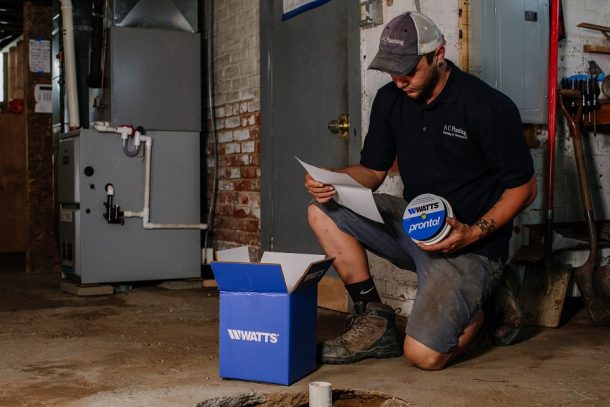
What You Can Do
There are a few key things that you can do if you want to boost your chances of gaining employment with a company as a plumber. Some of the main ones are as follows.
Get the Training You Need
One of the vital things you need to do if you want to become a plumber is to ensure you get the necessary training. It is important that you develop the right skills and earn the necessary certifications if you want to enjoy a successful career as a plumber. You will find plenty of options when it comes to places to train, so do some research and find one that suits your needs.
Sort Out a Great Resume
Another thing you should do is to sort out a great resume once you have the required skills and certifications. With a solid resume, you can boost your chances of getting work as a plumber with a company, and you can make sure you stand out from the competition. You can access cover letter templates and resume examples online, and these can prove very helpful in terms of creating your own professional and polished resume. This can then increase the chances of you getting an interview when you apply for plumbing jobs.
Get Some Work Experience
One of the other things you can try to do is to get work experience while you are still training to become a plumber. You can contact local plumbing companies to see whether they can offer any opportunities to go along with qualified plumbers to help out even if this is on a voluntary basis. This is a great way to get some experience and it will look great on your resume.
These are a few of the steps that you can take if you want to increase your chances of getting employment with a plumbing company once you have qualified.

Salary guides provide detailed breakdown of earnings across the HVAC, plumbing, roofing, cleaning, electrician, handiwork, landscaping, and painting industries Jobber, the leading provider of home service management software, today announced the launch of comprehensive salary guides to help home service entrepreneurs hire and retain the right people to grow their home service business and scale operations Read more
Salary guides provide detailed breakdown of earnings across the HVAC, plumbing, roofing, cleaning, electrician, handiwork, landscaping, and painting industries
Jobber, the leading provider of home service management software, today announced the launch of comprehensive salary guides to help home service entrepreneurs hire and retain the right people to grow their home service business and scale operations. Jobber’s salary guides outline salary information for the HVAC, plumbing, roofing, cleaning, electrician, handiwork, landscaping, and painting industries. Guides feature easy-to-read graphics that display average salaries organized by state, years of experience, and title.
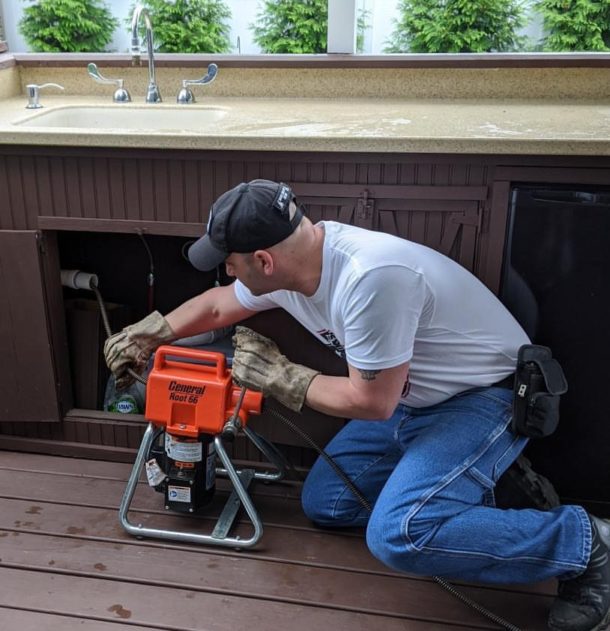
With job openings outpacing qualified candidates in many home service industries, hiring and retaining employees have become major challenges. The fierce competition has left many home service entrepreneurs with questions about what qualifies as a fair salary for employees in today’s market. Jobber’s salary guides are designed to address these questions and provide home service leaders with the information they need to grow their teams.
“When home service companies expand their teams, they strengthen their communities by providing meaningful local job opportunities and the training and skill development needed to build lifelong careers,” said Sam Pillar, CEO & co-founder of Jobber. “Our salary guides are just one of the ways Jobber is helping to equip home service businesses with the resources and tools they need to compete with large organizations and achieve success.”
A few highlights from the salary guides include:
Average Annual Salary for Experienced Roles by Industry:
- HVAC Service Manager: $72,899
- Journeyman Plumber: $56,054
- Experienced Roofer: $50,558
- Experienced Cleaner: $35,299
- Journeyman Electrician: $58,180
- Experienced Handyman: $66,086
- Experienced Landscaper: $41,553
- Industrial Painter: $40,598
Average Hourly Rates by Industry:
- HVAC Technician: $20.29
- Plumber: $22.64
- Roofer: $17.95
- Cleaner: $12.58
- Electrician: $23.00
- Handyman: $24.30
- Landscaper: $14.62
- Painter: $17.00
Data for Jobber’s salary guides was sourced from Payscale, the world’s largest salary database made up of more than 65 million salary profiles and 15,000 job titles.
To learn more about Jobber’s salary guides, visit https://getjobber.com/resources/salary-guides/. For additional resources around hiring best practices and other management best practices, visit https://academy.getjobber.com/.
